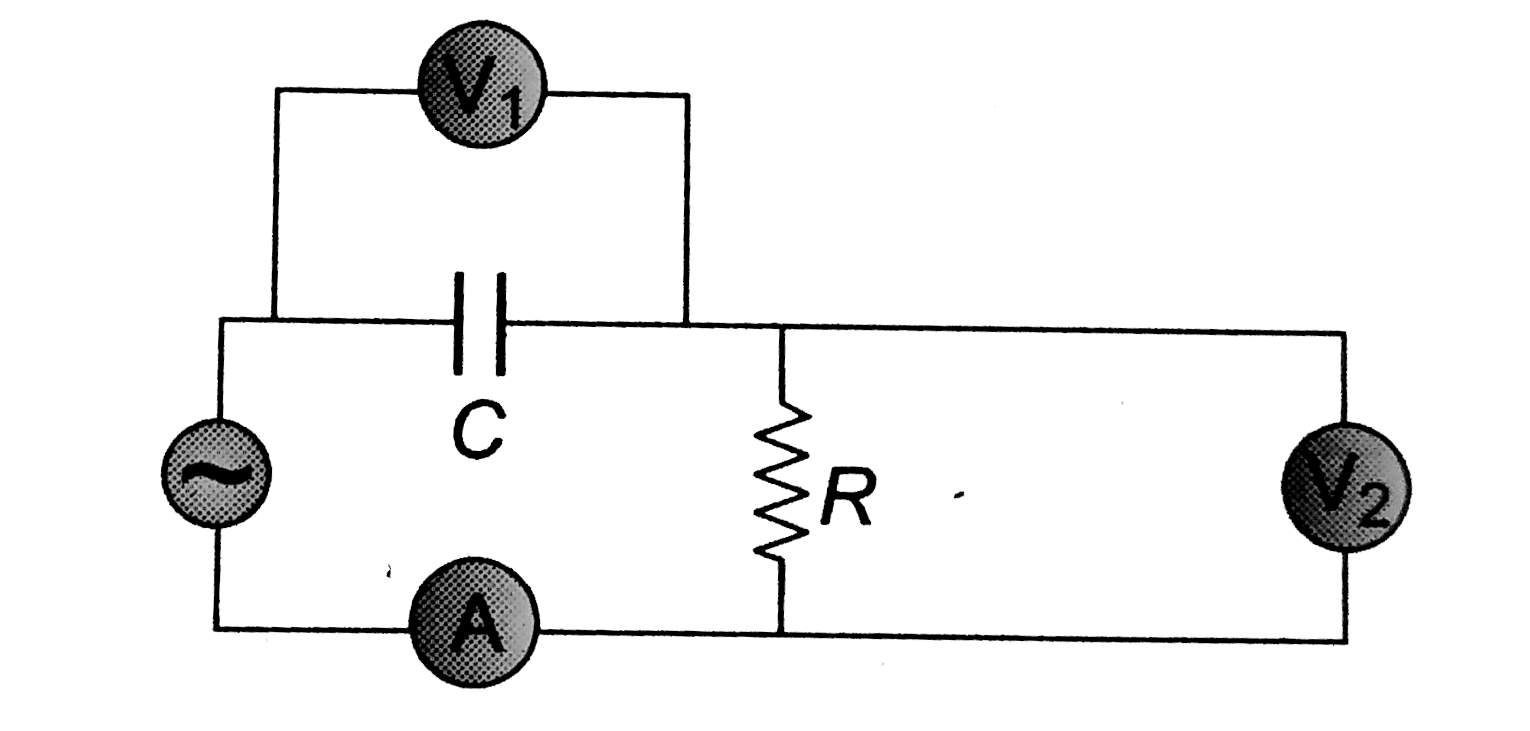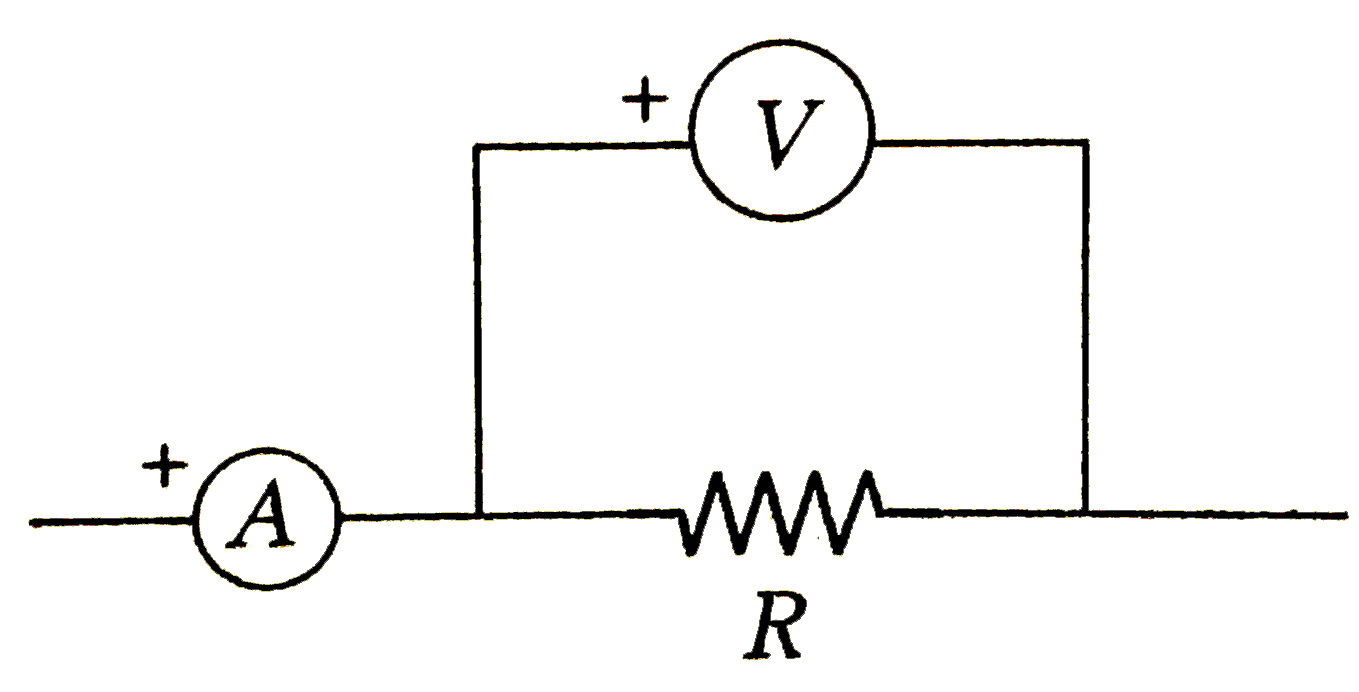The diagram shows a capacitor and a resistor connected in series to an source. and are voltmeters and is ammeter

Now, consider the following statements :
(I) Reading in and are always in phase.
(II) Reading in is ahead in phase with reading in ,
(III) Reading in and are always in phase. Which of these statements are/is correct
A
I only
B
II only
C
I and II only
D
II and III only
Video Solution
Text Solution
The correct Answer is:B
Voltage across capacitor leads the voltage across the resistance by
|
Updated on:21/07/2023
Topper's Solved these Questions
- BOOK - ERRORLESSCHAPTER - ALTERNATING CURRENTEXERCISE - Past Years Questions30videos
ALTERNATING CURRENT
- BOOK - ERRORLESSCHAPTER - ALTERNATING CURRENTEXERCISE - Assertion & Reason13videos
ALTERNATING CURRENT
- BOOK - ERRORLESSCHAPTER - ALTERNATING CURRENTEXERCISE - Assertion & Reason13videos
ALTERNATING CURRENT
- BOOK - ERRORLESSCHAPTER - ATOMIC AND NUCLEAR PHYSICSEXERCISE - Assertion and Reason23videos
ATOMIC AND NUCLEAR PHYSICS
Similar Questions
Knowledge Check
- Question 1 - Select One
An ammeter, voltmeter and a resistor are connected in series to a cell and the readings are noted as I and V. If another resistor R is connected in parallel with a voltmeter, then
AI and V increaseBI increasesCI and V will remain sameDI decreases - Question 2 - Select One or More
In the figure shows R=100Ω,L=2πH and C=8πμF are connected in series with an a.c. source of 200 volt and frequency f. V1 and V2 are two hot-wire voltmeters. If the reading of V1 and V2 are same, then
 Af=125HzBf=250πHzCCurrent through R is 2ADV1=V2=1000 volt
Af=125HzBf=250πHzCCurrent through R is 2ADV1=V2=1000 volt - Question 3 - Select One
If the readings V1 and V3 are 10. volt each, then reading of V2 is:
 A0 voltB100 voltC200 voltDcannot be determined by given information
A0 voltB100 voltC200 voltDcannot be determined by given information
In the series LCR circuit as shown in the figure, the voltmeter V and ammeter A reading are
 View Solution
View SolutionIn the series LCR circuit as shown in the figure, the voltmeter V and ammeter A reading are
 View Solution
View SolutionAn ammeter and a voltmeter are connected in series to an ideal battery of emf E. If the ammeter reads I and voltmeter reading V, then
View SolutionAn ammeter A, a voltmeter V and a resistance R are connected as shown in the figure. If the voltmeter reading is 1.6V and the ammeter reading is 0.4A, then R is
 View Solution
View SolutionA voltmeter reads V volts in an A.C. circuit then V is
View Solution


